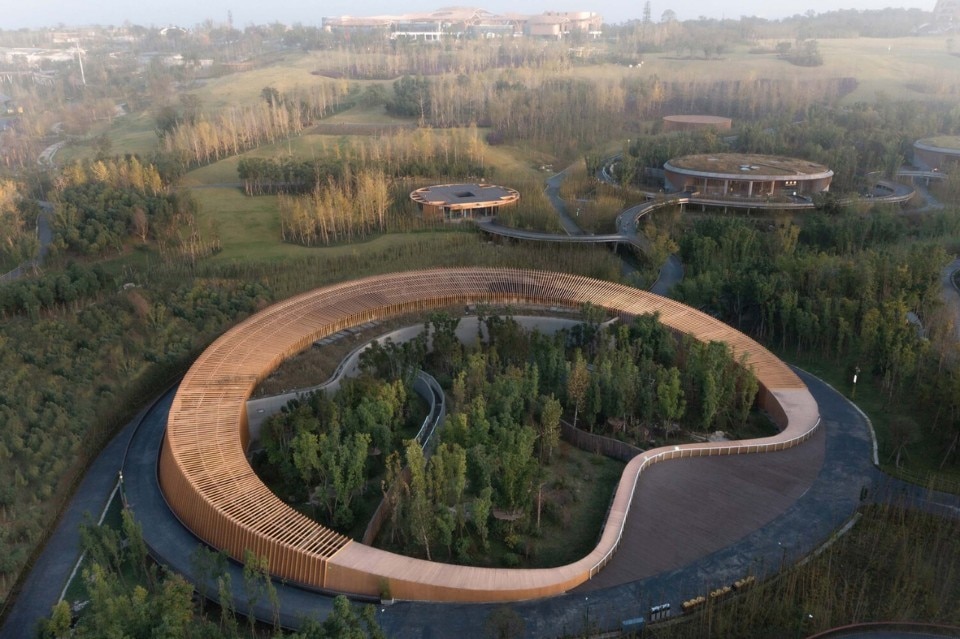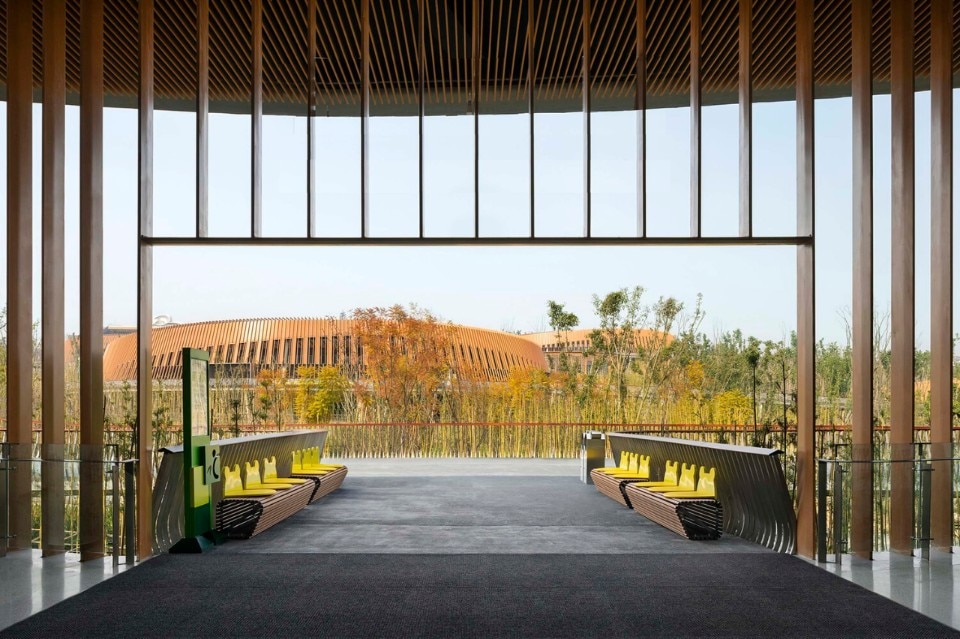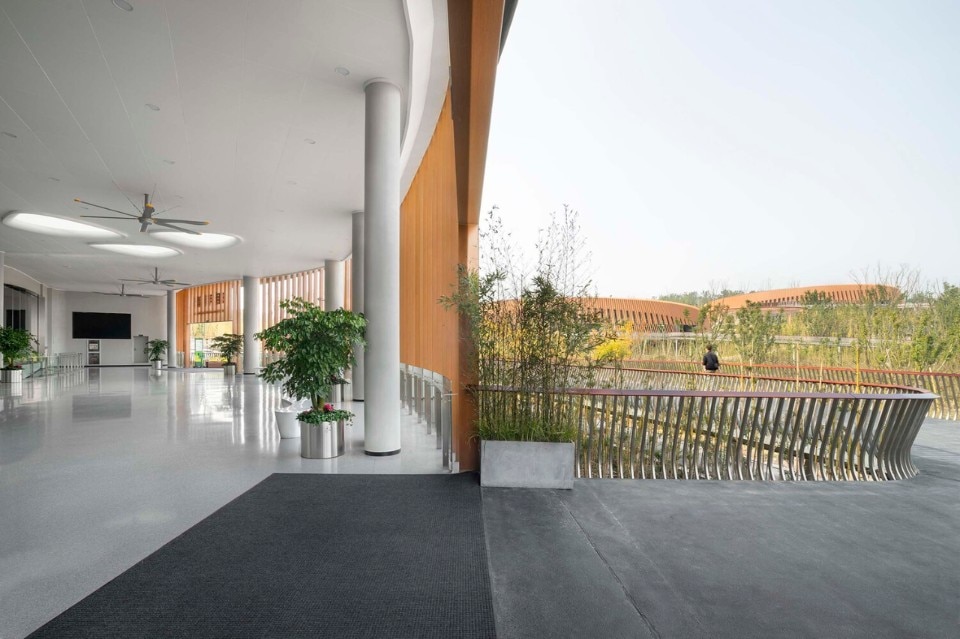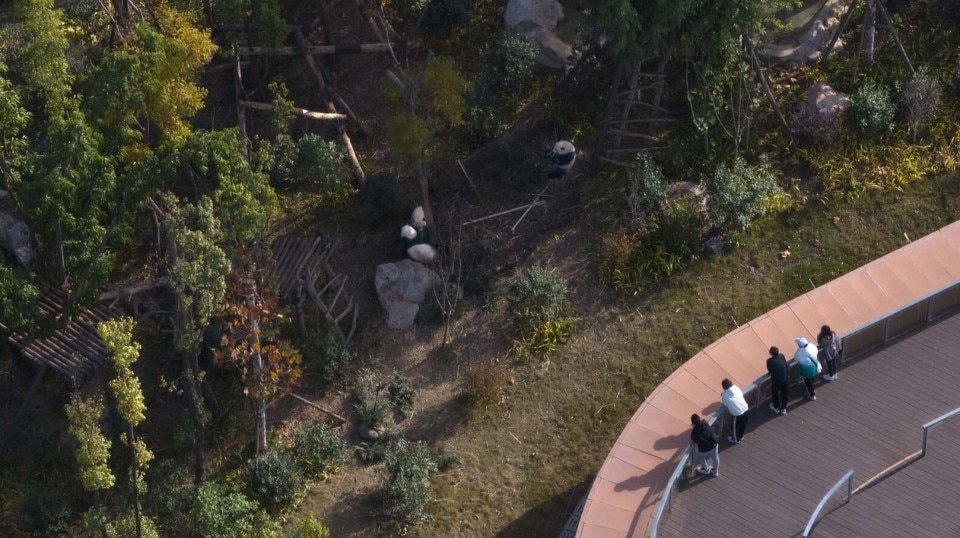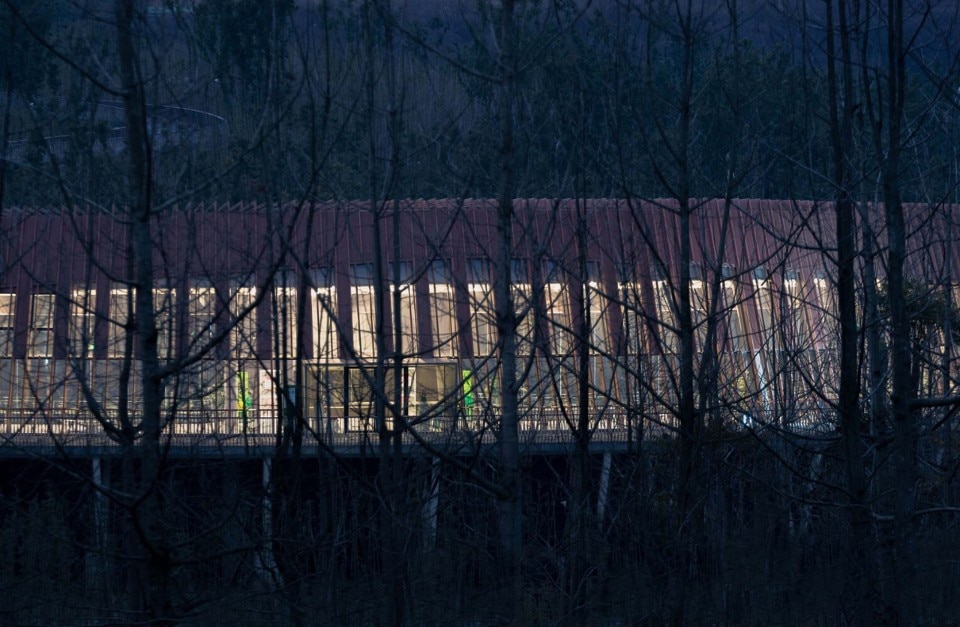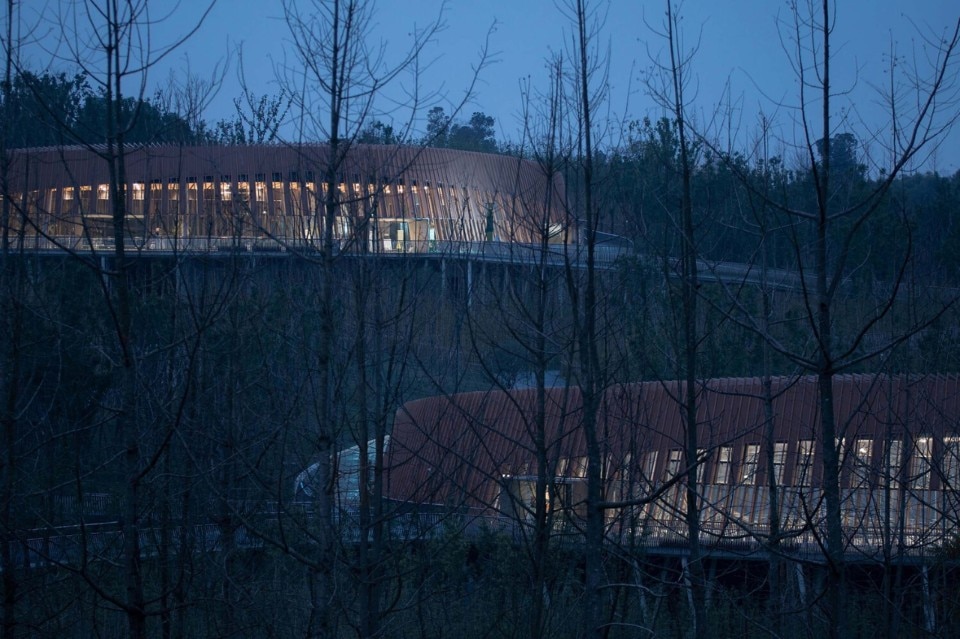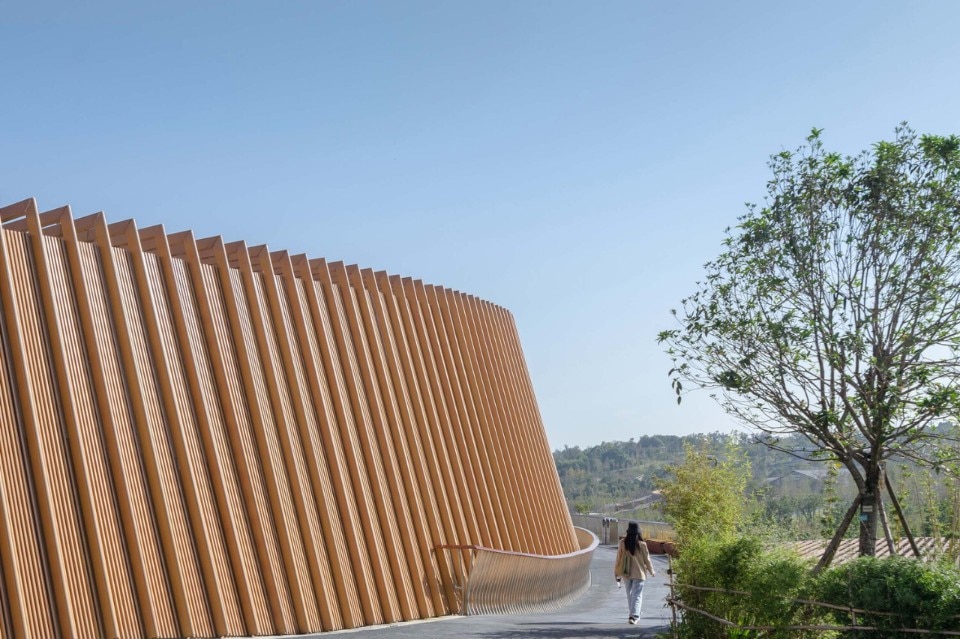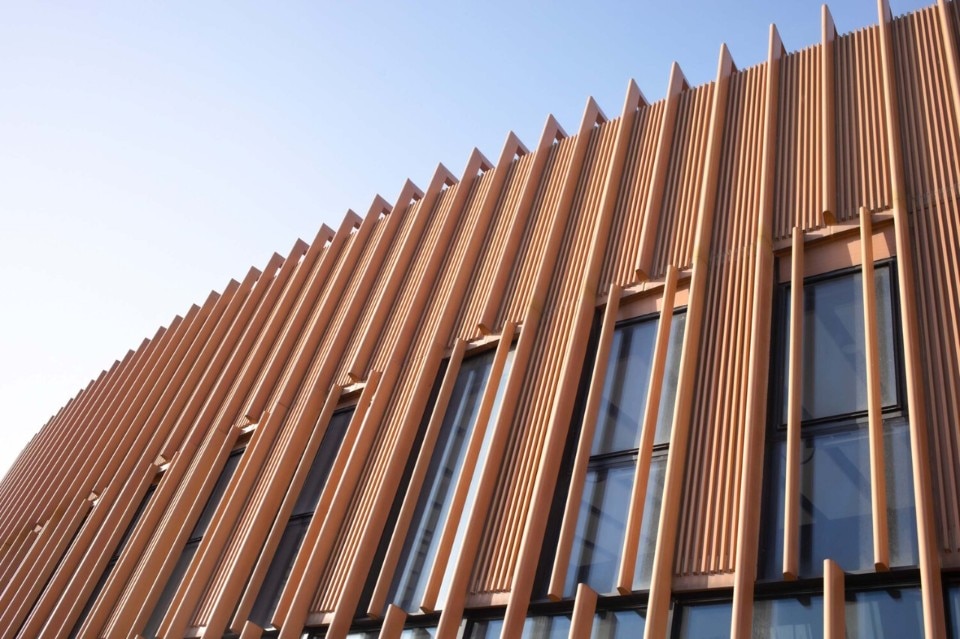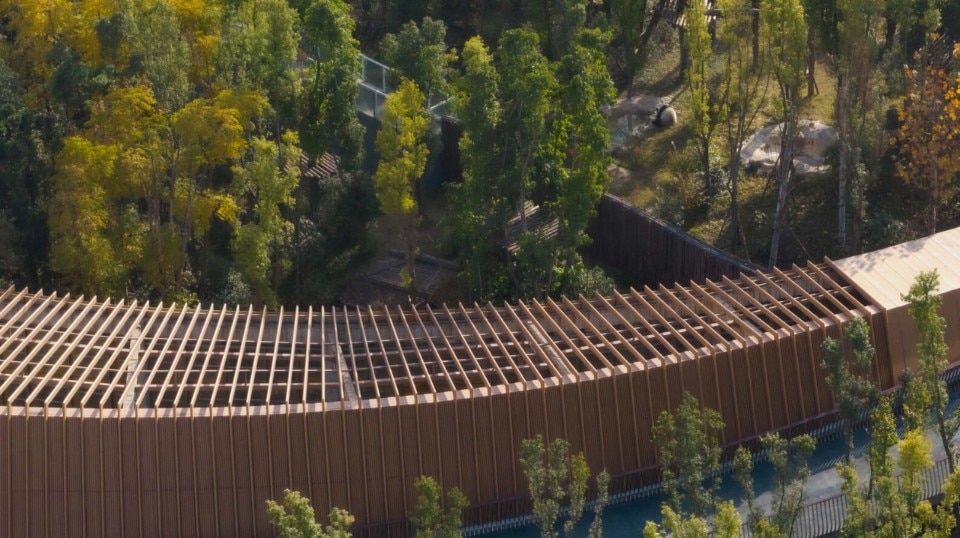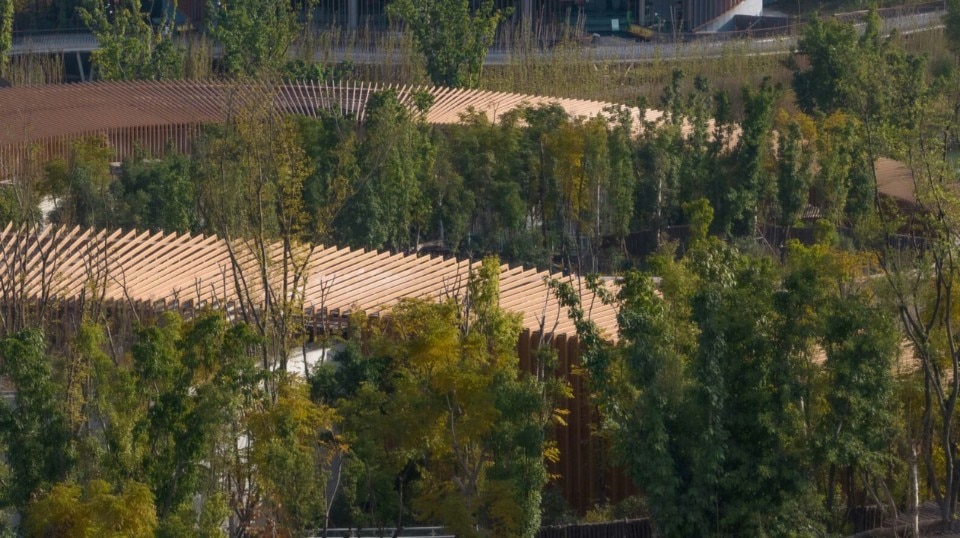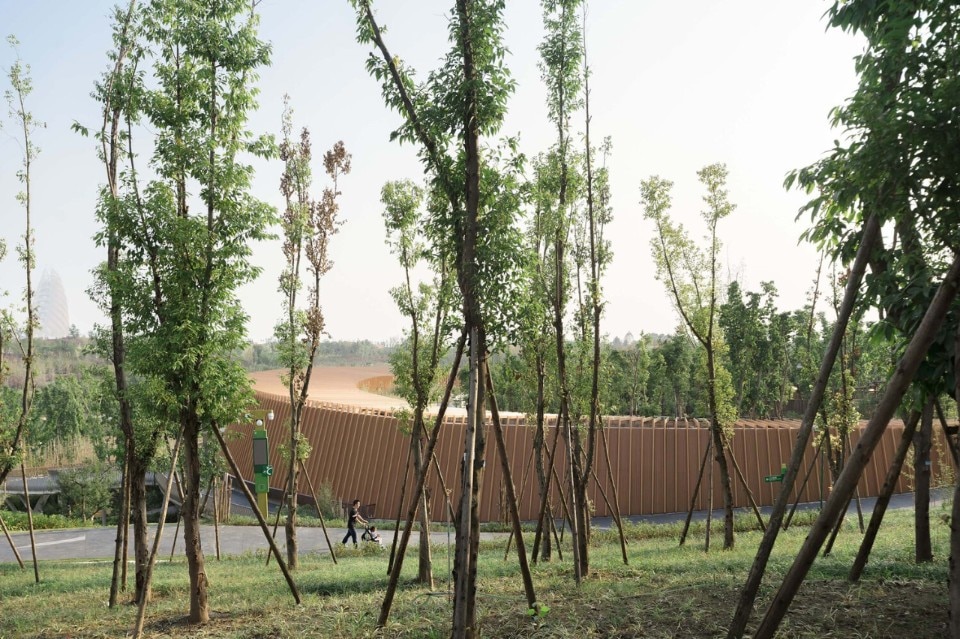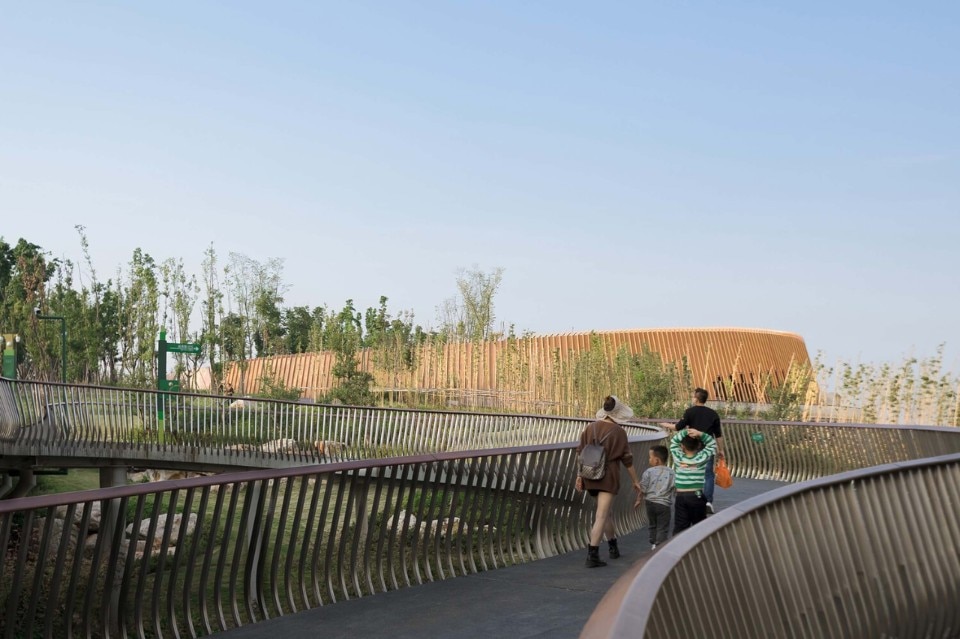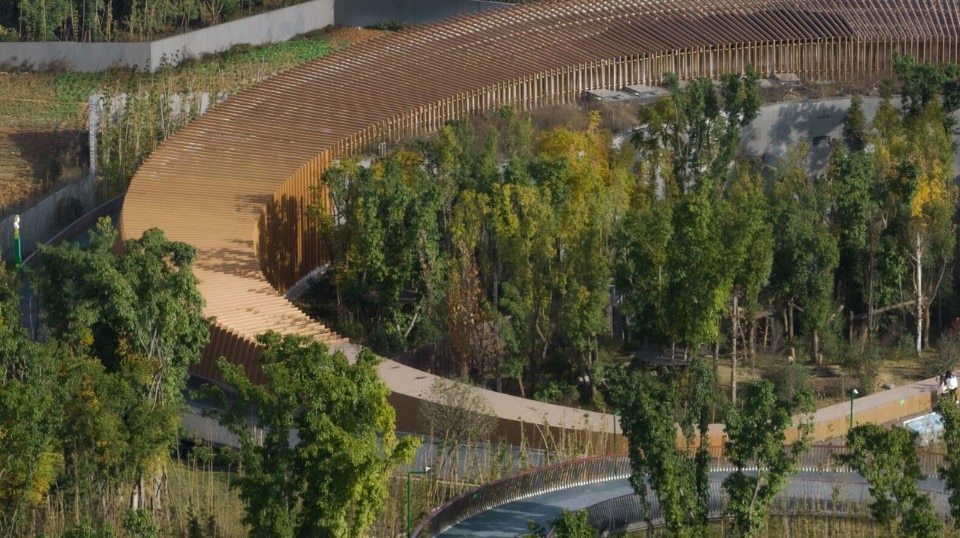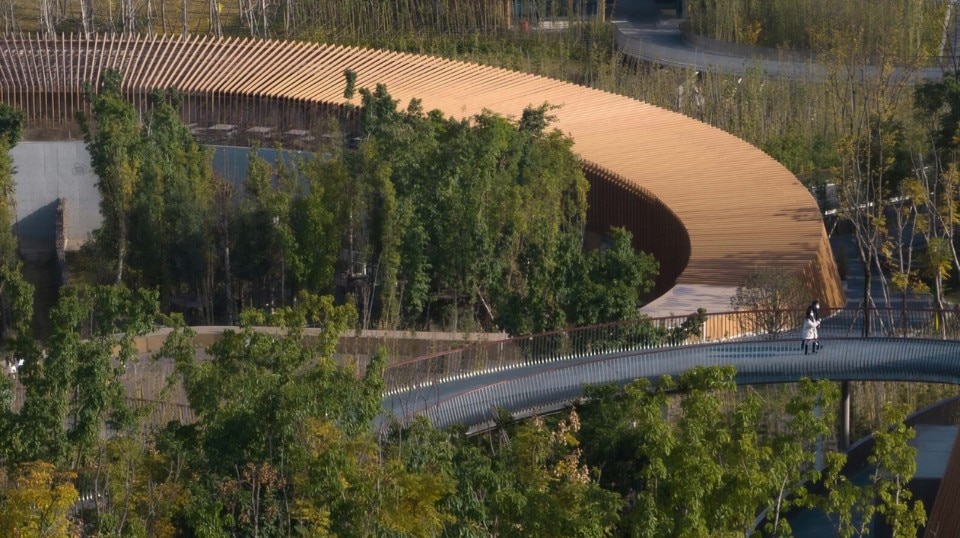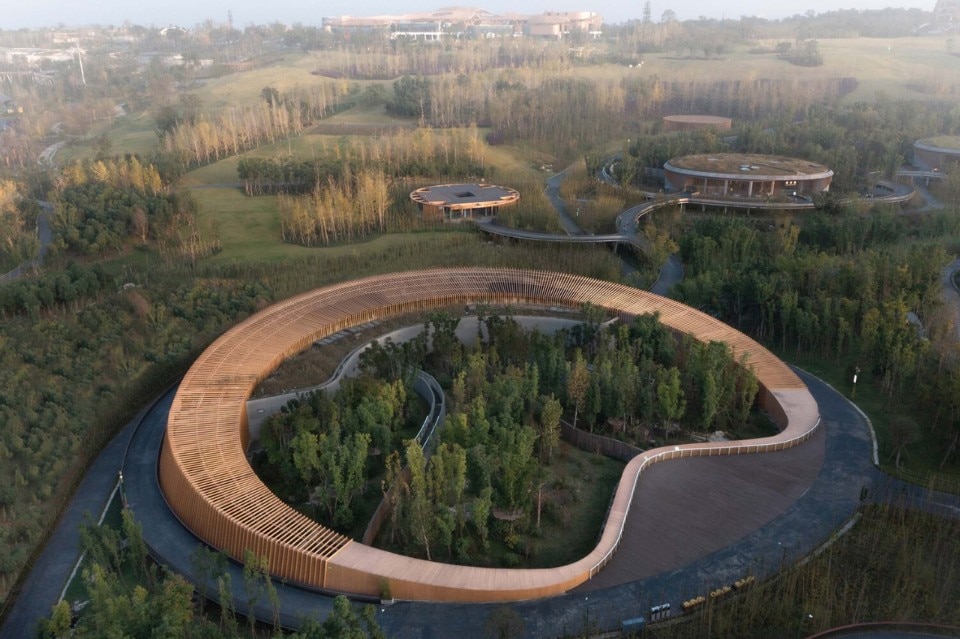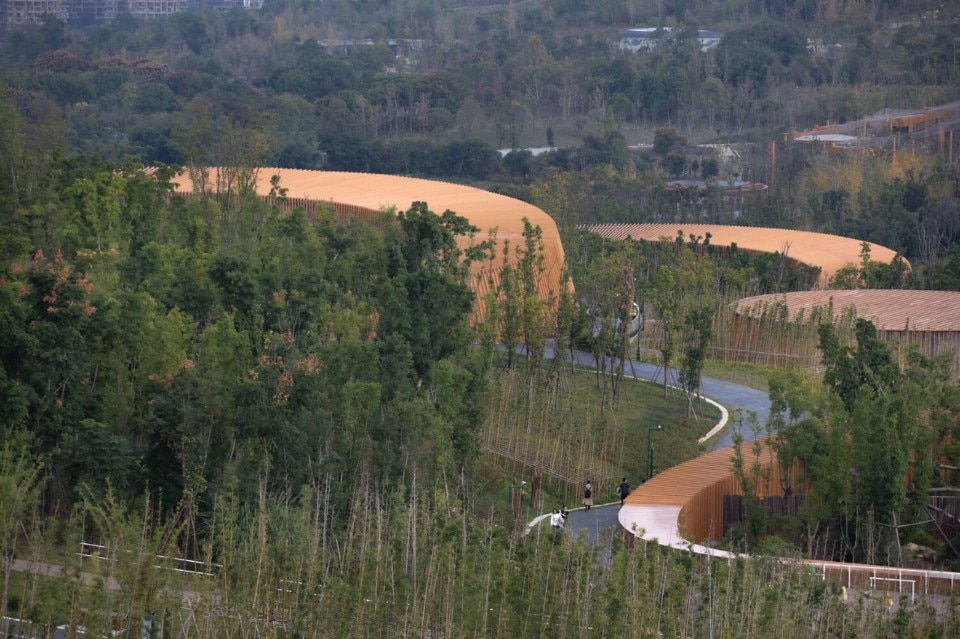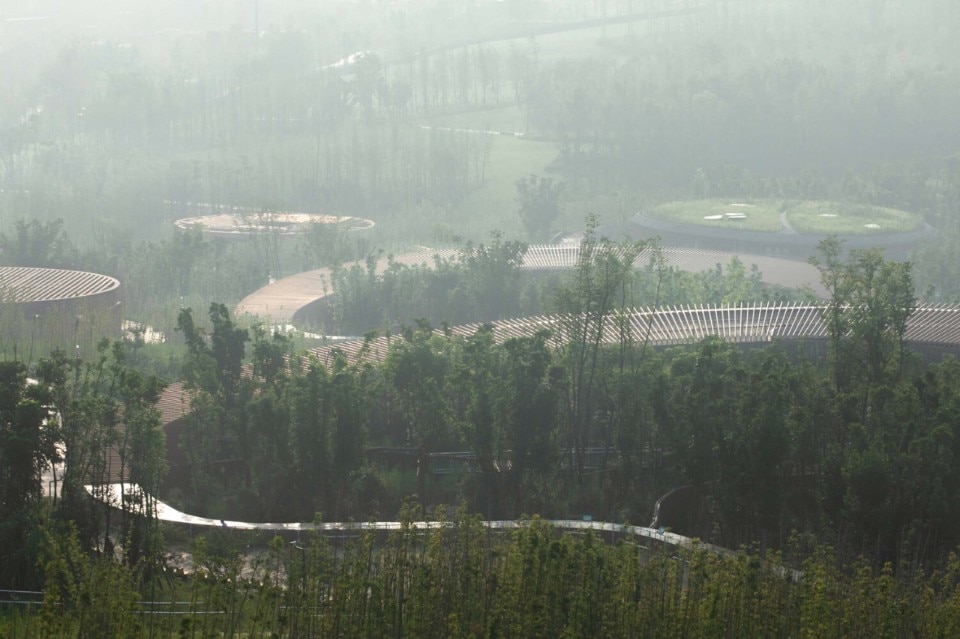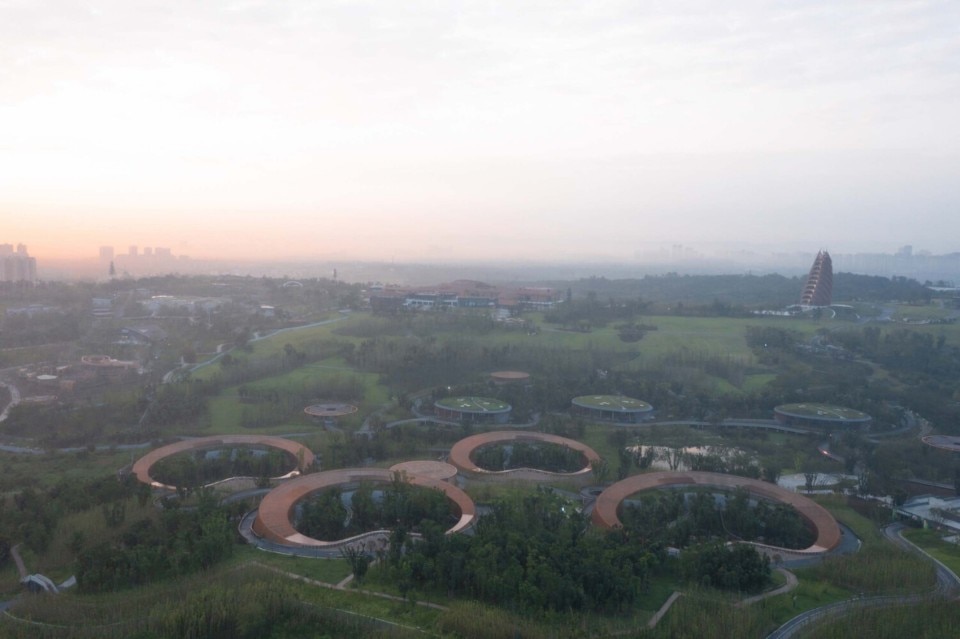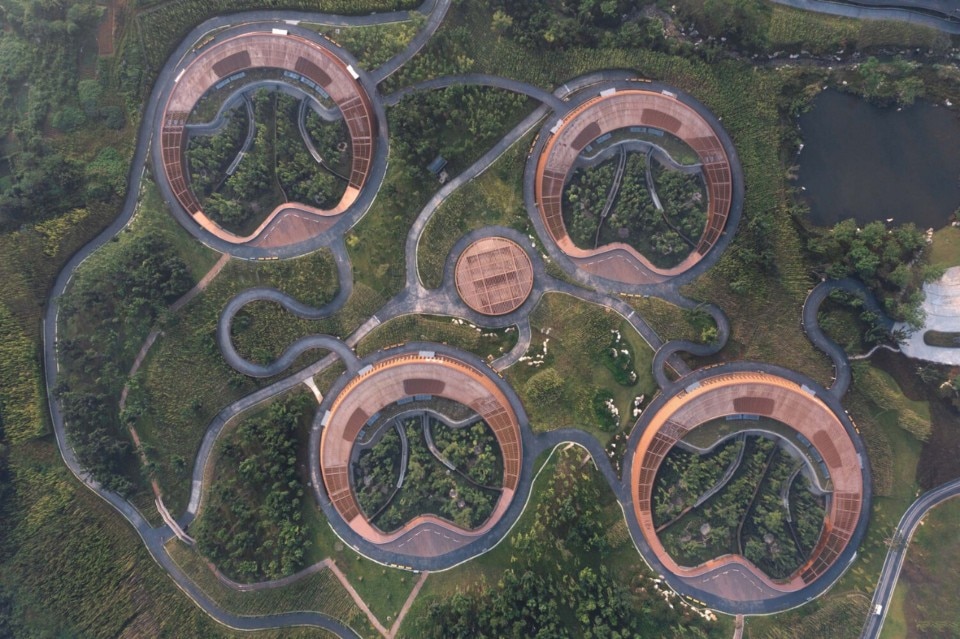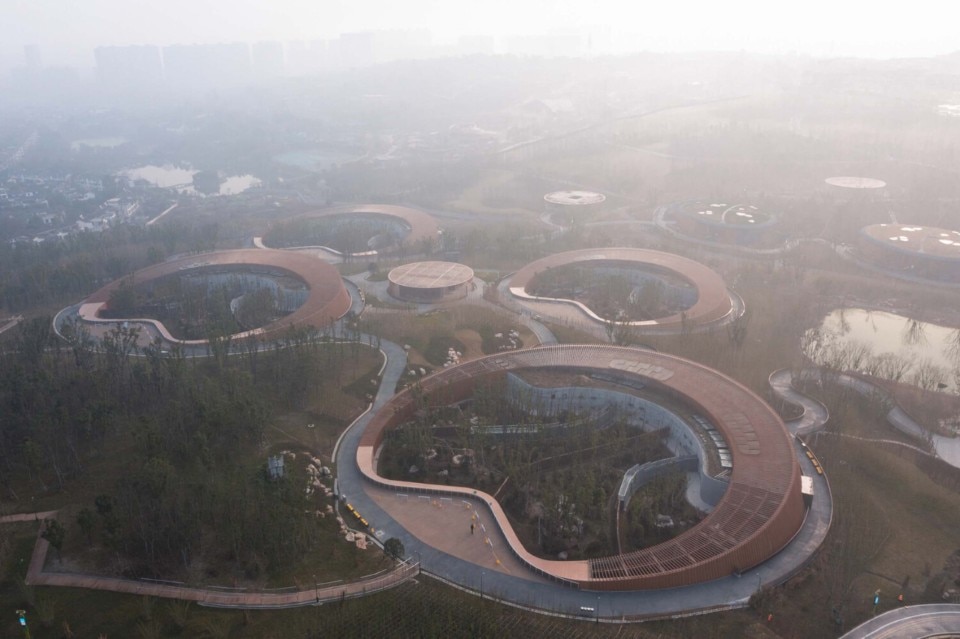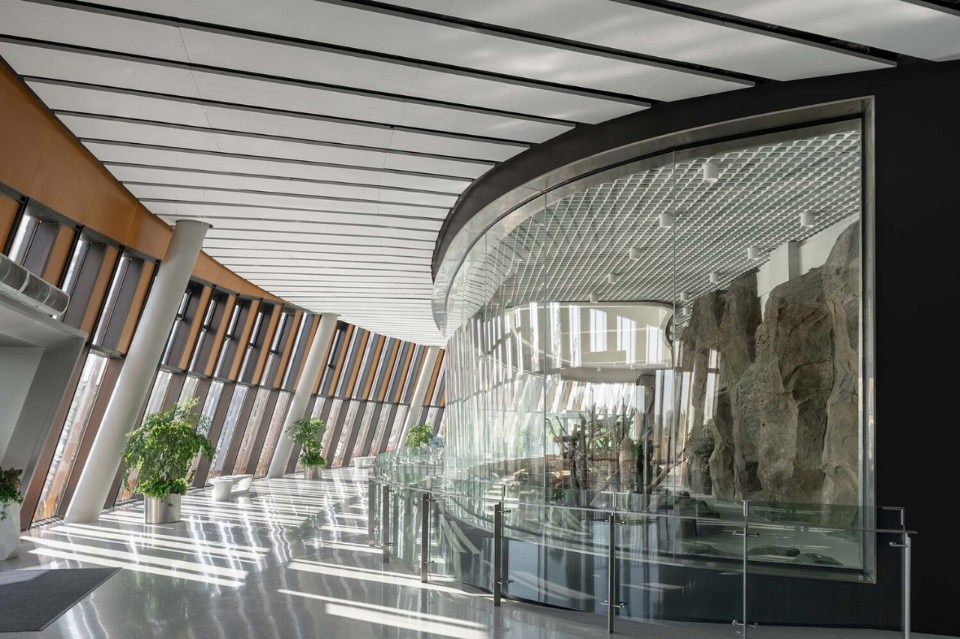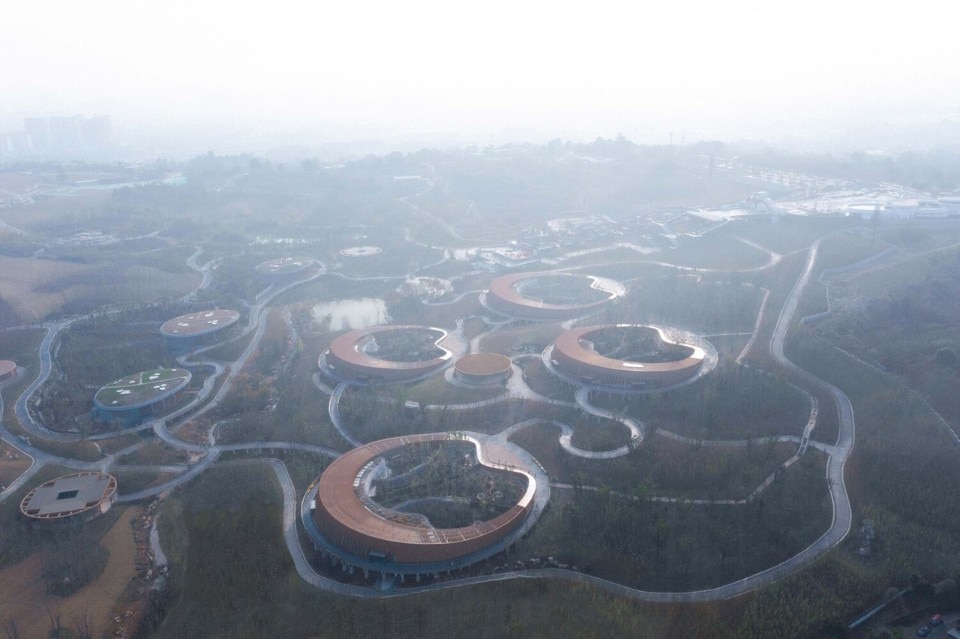EID Architecture has recently completed the Panda Pavilions, a major campus extension in a national nature reserve on the outskirts of Chengdu, China. The Chengdu National Giant Panda Research and Breeding Centre is the world's leading panda conservation research institute and now houses a group of four Ping Jiang-designed Panda Pavilions, which have just opened to the public.
The pavilions form a research laboratory for the study of panda behaviour and activities. Designed to promote interdisciplinary collaboration as a giant panda care centre, the facilities also serve the community for educational and recreational purposes, attracting millions of panda enthusiasts to the campus each year.
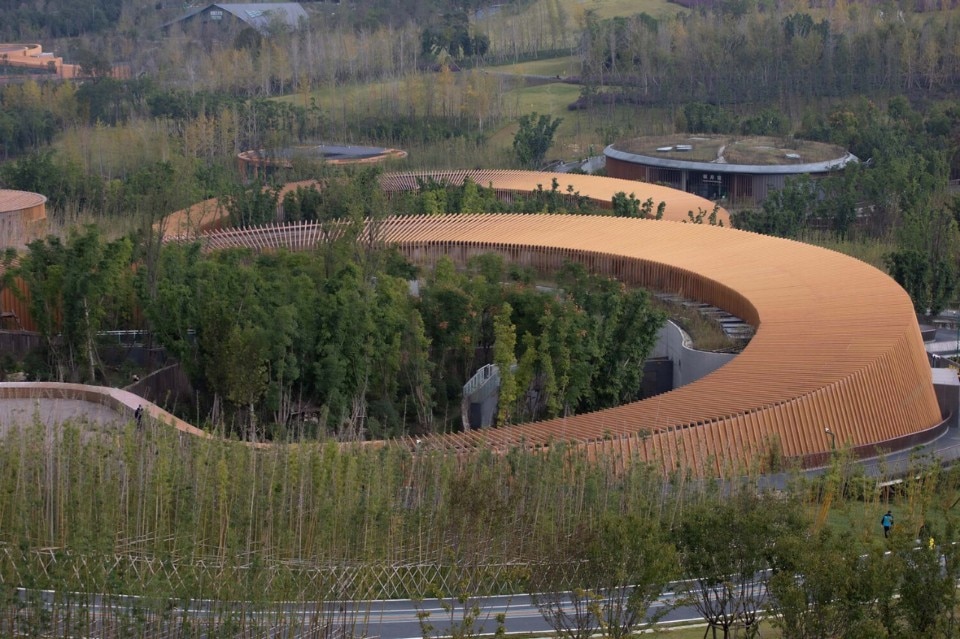
The architecture is organised around the four circular courtyards, which serve as playgrounds for the bears and provide a continuous connection to nature. Designed to educate, entertain and inspire a diverse audience from across China and around the world, the Panda Pavilions offer a unique cultural experience that combines science, education, art and entertainment.
Inspired by the natural scenery of Chengdu’s grasslands, the design of the Panda Pavilions is a fusion of architecture and landscape. The four ring-shaped pavilions nestle into the forested slopes of the park, enclosing a terraced outdoor enclosure for the pandas. Connecting walkways and bermed viewing galleries provide visitors with multiple vantage points to view the pandas at relatively close range, while maintaining the necessary physical boundaries separating the panda space from the viewing and pedestrian areas.
The pavilion rings house the pandas’ indoor activity areas and living quarters, as well as administrative areas for staff and support spaces, such as rooms for the preservation and storage of bamboo shoots, which are essential to the pandas’ diet. The facilities also include interactive exhibits and educational spaces designed for panda research and conservation.
All images courtesy EID Architecture.


